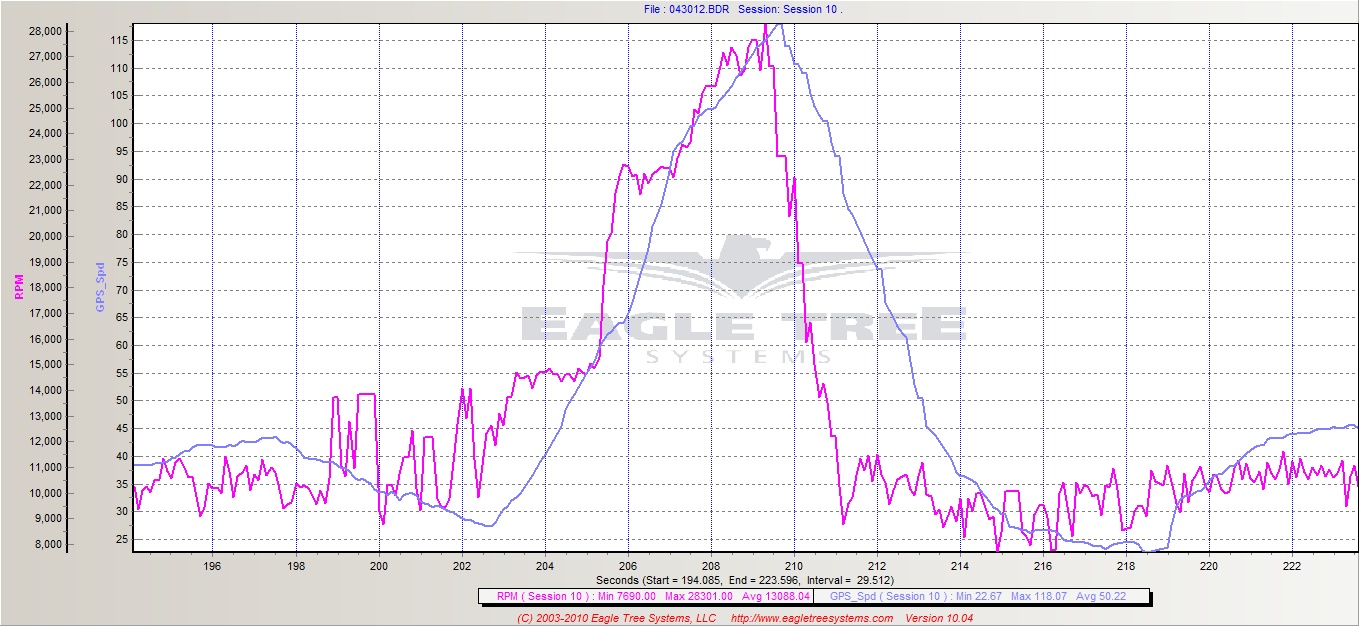Charles Perdue
Well-Known Member
- Joined
- Oct 8, 2005
- Messages
- 2,177
Been there....done that......
40 years ago.....
40 years ago.....

speaking of graphs and acceleration of a hydro, do you see the stuttering that happens on the dyno at about 15-17k when then motor is actually in the boat ?
Is it a byproduct of the function of the pipe ?
would trying a different pipe or pipe length prove this out ?
I think that a pipe that takes a while to two stage has to be costing time thru the traps..










Looks like the setup is running nicely now Terry.

Terry,
Might be worth trying to replace the grease with some light oil. I also suspect that the coupler and other heat sources made causing the inner race to expand and since the outer race sits in a big block of aluminum you may be loosing all the clearance in the bearing which generates more heat.
-Tyler

Terry,
If you plan on running more with the ducted fan as a load can you come up with a simpler direct drive connection and remove the clutch? The clutch should only be needed for dyno pulls right, so for break in and other tests with the fan load I would think a direct drive option would be suitable.
-Tyler
BTW, I think you need to take all that beautiful tool plate and machine turn it for some additional bling factor.
Moly?

Enter your email address to join: